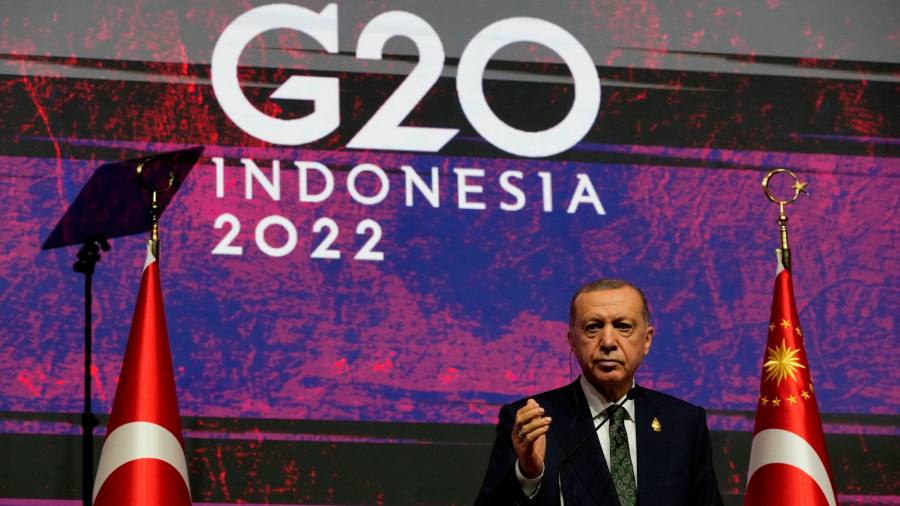
The writer is an FT contributing editor, the chair of the Centre for Liberal Strategies, Sofia, and fellow at IWM Vienna
President Joe Biden and President Xi Jinping’s meeting in Bali, on the sidelines of the G20, presented a paradox. Conducted in the familiar terms of cold war summits, at which respect and good behaviour were foregrounded, it nonetheless offered the best evidence yet that an actual cold war has not returned.
Simply put, the insecurities and ambitions of what we might call the Middle Powers, rather than any grand strategy of the Middle Kingdom, are shaping the emerging geopolitical landscape.
Observed from a distance, Russia’s war on Ukraine might appear like a rerun of the cold war stand-off between the “free world” and Russian (and Chinese) authoritarianism. A closer look complicates the picture.
Whereas America’s allies in Europe came together in defence of Ukraine and against Beijing’s tacit support for Vladimir Putin’s war, other states, especially in the global south, have offered a different response. This makes sense in the context of the collapse of the post-cold war order.
A longstanding cold war ally, Saudi Arabia, and a current security partner, India, have recently recast their ties with the US, dispensing with their wedding rings in the hope of more open relationships. The Saudis have started to sidle up to the Brics countries. Meanwhile the Indians have worked up a healthy appetite for discounted Russian oil (although in September Narendra Modi did rebuke Putin for launching the war).
Western appeals for solidarity with Ukraine have often fallen on deaf ears. The global south remains reluctant to see Kyiv’s resistance to Russia as an anti-colonial war. Their own postcolonial identities are shaped by struggles against European empires, or against US hegemony, not against Russia or China.
And while America has been struggling with some of its allies’ newly discovered attraction to an open relationship, Russia’s friends in central Asia have also begun to express misgivings. In the case of Kazakhstan, Russia’s invasion of Ukraine did not strengthen Moscow’s alliance with Astana, it basically sundered it.
The war in Ukraine has shone a spotlight on the activism of the Middle Powers as the major driving force of the reshaping of the international environment. They are a cast of odd bedfellows. South Africa, India, South Korea, Germany, Turkey, Saudi Arabia and Israel, to name but a few, don’t have much in common.
Some are democracies, some are autocracies and others populate a grey area in between. These countries have forged their post-cold war identities in an interconnected world in which one’s major trading partners are often not one’s closest allies, and where technological decoupling between the US and China can be more consequential than the ideological divide between them.
Some Middle Powers are developing countries with booming populations, others are economic powers struggling with demographic decline. Some earned their Middle Power status thanks to geographic size, others thanks to economic might. Some are constructive and co-operative members of the international community, others can be transactional and suspicious.
But they all share one fundamental feature: they are determined to be at the table and not on the menu, since they all have the power and ambition to shape their regions. As Shannon O’Neil of the Council on Foreign Relations argues in her book, The Globalization Myth, in most places in the world globalisation translates to regionalisation. This is the key to the influence of the Middle Powers.
Turkey’s role in the Russia-Ukraine war is a textbook example of Middle Power activism. President Recep Tayyip Erdoğan has been averse to cold war alliances, ingeniously crafting a Zelig-like ambition to be the bride at every wedding and the baby at every christening. True to form, Ankara has downplayed its identity as a Nato member and US ally in exchange for the role of mediator between Moscow and Kyiv.
Middle Power activism can be salutary when identifying global solutions such as EU’s climate initiatives, or sanguinary when countenancing Russia’s invasion of Ukraine. But it is a new normal — the trademark of the emerging international order.
One thing is certain: there will be no Bandung conference of 1955; no resurrection of the cold war’s non-aligned movement. There is no common ideology among the Middle Powers. Indeed, they often have divergent or competing interests. And the movement is not even a movement.
Middle Powers aspire to have the global influence of Washington or Beijing, yet they are well aware of how unlikely that eventuality is. But while during the cold war it was the Middle Powers that had to adjust to the whims and plans of the superpowers, today the US and China have to manage a world reshaped by their activism. Russia’s invasion of Ukraine is the clearest example of our new reality.